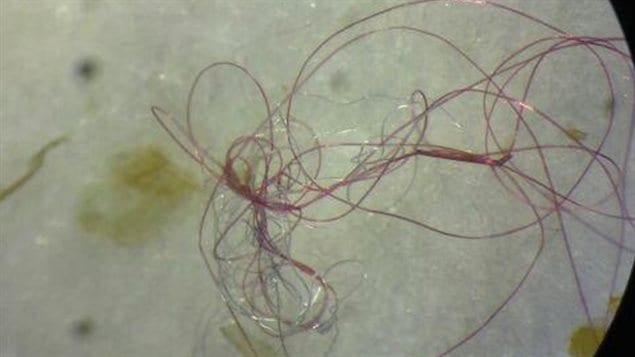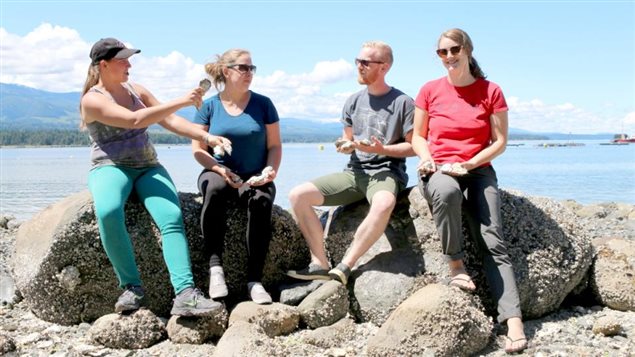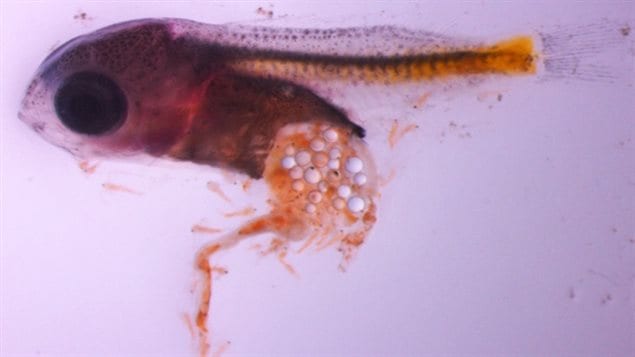Microplastics are now showing up everywhere in oceans and lakes, and in aquatic creatures. Microplastics are tiny specs of plastic ranging in size from 5mm down to microscopic.
They are either plastic beads used in some cosmetics or toothpastes as abrasives, from plastic bags and containers that break down into smaller and smaller bits but never disappear, or fibres from synthetic clothing breaking free during washing.

While the effects of microplastics aren’t fully understood, it seems almost certain that they aren’t good. Plastic garbage in the ocean already kills everything from sea-turtles, to whales, to seabirds.
Now two universities in British Columbia on Canada’s Pacific coast, are studying the effect of microplastics on bivalves; clams, oysters, mussels.
One of the university students taking part, Maggie Dietterle says, “Microplastics are an added factor to plastic pollution. The beading in toothpaste, confetti from parades, the glitter people put on their faces, the sources are endless and the hardest part is educating people about it”.
She adds, “Since I started the project I’ve been going home and talking to my friends and family about this. I want to get the word out and start them thinking about where the plastic products they buy end up. Shellfish are resilient so I ask myself, if they are being affected by microplastics then what are the microplastics doing to the more vulnerable organisms in the oceans”?
- RCI-Mar 2015- microbeads everywhere
- RCI- Jun 2016- microbeads toxic
- RCI-Mar 2015-plastic kills baby whale?
The research is being led by Garth Covernton, a University of Victoria (UVic) masters student and supervised by Vancouver Island University (VIU) biology professor Sarah Dudas. She is holds the Canada Research Chair in shellfish aquaculture ecosystem interaction and biology.

The research involves tagging some 3,000 bivalves (2,000 oysters, 1,000 clams) in shallow waters on Vancouver Island and the mainland.
Potential threat to human health
People are being asked not to touch any bivalve they find with a tag “experiment in progress”. To get a wide picture of the situation, the marked bivalves includes some areas where commercial shellfish aquaculture is taking place, as well as somewhat remote areas of the coast, and areas near the urban centres of Victoria and Vancouver
Dudas says, “The ability of microplastics to absorb and concentrate chemicals that may be eaten by organisms makes them a serious emerging threat to wildlife and natural ecosystems and potentially, human health”.
In the VIU press release she adds, “We are looking at shellfish because they are filter feeding organisms. They accumulate anything that is in the water and they live on the coast where the most drastic changes are happening, which makes them excellent sentinels of ecosystem health.”
She also notes that so far they are not finding a lot of the microbeads, but rather “mainly fibres that come from washing your clothes or fibres that might be shed from ropes or other fabrics”.

“Microplastics are an added factor to plastic pollution. The beading in toothpaste, confetti from parades, the glitter people put on their faces, the sources are endless and the hardest part is educating people about it,” said Dietterle. “Since I started the project I’ve been going home and talking to my friends and family about this. I want to get the word out and start them thinking about where the plastic products they buy end up. Shellfish are resilient so I ask myself, if they are being affected by microplastics then what are the microplastics doing to the more vulnerable organisms in the oceans?”
The tagged shellfish were placed in 22 beaches, 11 shellfish farms and 11 wild sites. They will be re-harvested in September to determine how much microplastics they consumed over the summer.
Scientists estimate several million tonnes of plastic waste end up in the ocean every year..
Additional information-sources
- VIU Deep Bay Marine Field Research Station website
- Vancouver Island University- shellfish project
- CBC- Liam Britten
- Realnews-whale deaths from plastic
- Nature- (2015-complete) plastic debris in seafood
- National Geographic Jan 2015- whale killed by DVD case
- Science Direct (2014 abstract) microplastics in bivalves for consumption
- Globe and Mail-Dene Moore- millions of tonnes plastic waste







For reasons beyond our control, and for an undetermined period of time, our comment section is now closed. However, our social networks remain open to your contributions.